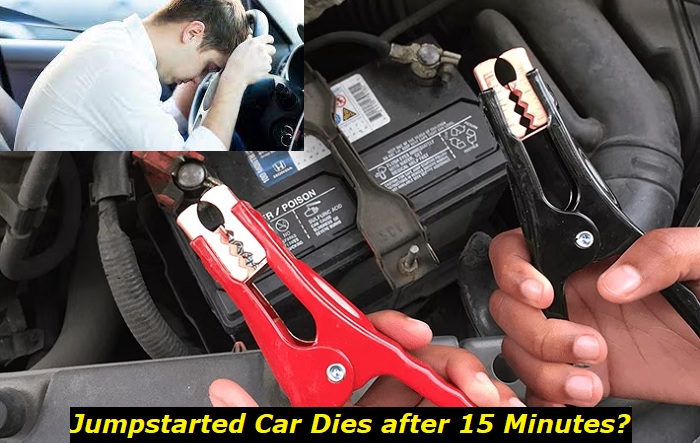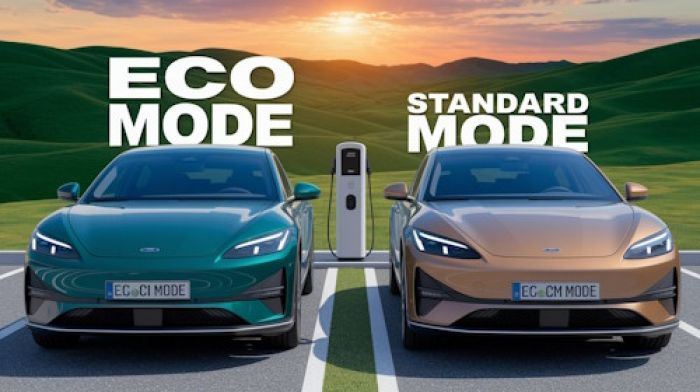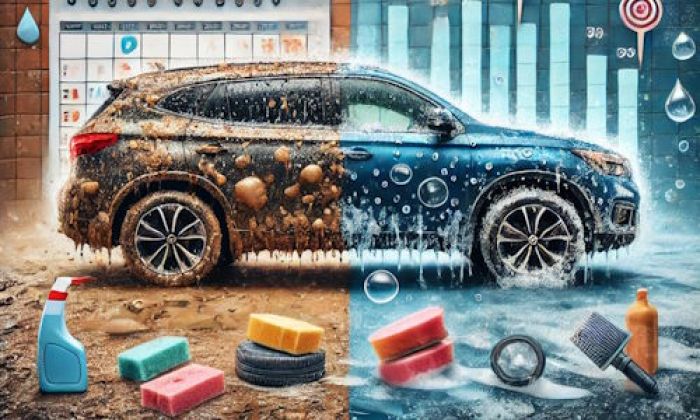If you have this issue, you probably didn't let the car work long enough to charge the low battery and now it has no juice to crank the engine again. So, don't stop your engine for at least half an hour or longer after jump-starting the car. Also, the battery may be completely dead or the alternator may not be working to supply the battery with the needed power. Let's dive in to learn more about each reason!
No-power problems highlights
- Level of urgency:high
- DIY inspection:possible but complicated
- DIY repairs:possible but often complicated
- Can you drive?no
- Price of repairs:$50 - $250
- If ignored:no-start, nothing works
- Ways to fix:check the battery, connections, fuses

Why Isn't Your Car Starting 15 Minutes After Jumpstarting It?
First of all, you need to understand that jump-starting is just the way to start a car with low battery. It doesn't automatically make your battery charged in a minute. No, the battery is still low and needs some time to get the proper charge.
The best scenario after you successfully jump-start a car is to go home, get a good battery charger and hook it to the battery to let it get some juice. If the battery is older than 4-5 years, it may just be almost dead, so it needs replacement.
But let's look into the possible reasons for this phenomenon, anyway.
1) The Engine Isn't Running Long Enough
The number one reason why your car might not be starting 15 minutes after jumpstarting is that the battery hasn't had enough time to charge. Jumpstarting only provides enough energy to power the starter motor and crank the engine. Despite connecting to the car's battery, jumpstarting doesn't charge the battery.
To charge your battery enough so that the car will start again after jumpstarting it, you will need to allow the engine to run for a while. Typically, your engine will need to run for about 30 minutes to charge enough for the battery to start the car again.
You should also drive your car during this time, rather than let it idle. Driving your car demands more power from the engine, which allows the alternator to generate more energy. This helps the battery charge faster and ensures that the charging process is more likely to work.
2) The Battery is Old or Weak
If you've tried running the engine for thirty minutes, and the car still won't start, then the first place you should look is your battery. If your battery is old or weak, it might not be able to hold enough charge to power the starter motor.
Jumping your car will give it enough power to start, but a weak battery won't charge from the alternator, and might not be able to sustain the car's electrical demands. Replacing your battery if it's old is the only way to solve the problem.
3) Faulty Alternator
Another possible cause is that there's a problem with your car's alternator. The alternator uses the power produced by the engine to generate energy to power the car's electronics while the engine is running. The alternator is also responsible for charging the battery.
If your alternator is not functioning, your car might not get the power that it needs, and the battery will drain quickly.
Some signs of a faulty alternator are:
- Your battery dies often.
- The electrical systems in your car malfunction, fail, and power off while the car is running.
- Your car's lights are dim or flickering.
- Your car has trouble starting or stalls frequently.
- The accessories in your car are slow or malfunctioning.
A faulty alternator will result in your car not getting the electrical energy it needs. This could result in the car stalling while driving, or the battery running out of charge. If you suspect that the issue is with your alternator, then you will need to get your alternator replaced or repaired.
4) Damaged Starter Motor
Another thing to consider when trying to find out why your car isn't starting again is the starter motor.
Jumpstarting your car can put some degree of strain on different parts of the engine, especially if the jumpstarting is done repeatedly or incorrectly. An incorrect jumpstarting technique can cause damage to your starter.
If you jumpstart your car, and it fails to start afterward, it's possible that the starter was already on its way out, and the strain of jumpstarting was enough to make it give up completely.
Have you noticed starting problems within the recent months? Do you hear some bad noises when trying to start the car? These are the clear signs that your start motor requires repair or replacement.
How to Avoid These Issues in Your Car?
While jumpstarting is a very useful trick for getting back on the road, it's an option that most drivers are hesitant to resort to. Here are some tips that can help you keep your battery and alternator in good condition to start your car each time.
- Don't Crank for Too Long
If your car won't start after driving for a while, it's important not to keep trying to crank the engine. Keeping the key turned (or the button pressed) and attempting to crank the engine for more than 30 seconds in a no-start condition can cause serious wear to the starter and cause it to fail.
Cranking for too long also causes a serious drain on the battery that could leave you with a dead battery out of the blue.
- Maintain Your Car
Make sure to take care of your car and keep up to date on its maintenance. Clean oil and filters will reduce strain on the starter and battery by making sure the car starts easily.
Regular maintenance will also help you catch potential problems before they evolve into significant issues. Make sure to keep an eye on the age and condition of your battery so it won't fail on you suddenly.
- Don't Keep Trying to Jumpstart
If you eventually find yourself stuck on the side of the road and you need to jumpstart, make sure not to jumpstart your car too much. If you keep trying to jumpstart your car, you can damage the battery and other electrical components. The alternator and starter are especially susceptible to damage from repeated jumpstarting, especially if the jumpstarting is being done incorrectly.
- Keep the Jumper Cables in the Trunk
Just keep the jumper cables in the trunk at all times. They may save you hundreds of dollars and hours of your time one day. Also, learn how to jump-start the car before you get into trouble. This will help you avoid mistakes and keep your vehicle away of trouble.
Conclusion
If your car won't start 15 minutes after a jumpstart, the most common issue is that the alternator has not had enough time to charge the battery. Driving for about 30 minutes is the best way to ensure that the battery is charged enough to start the car again.
The issue could also be caused by a weak battery, or a faulty alternator or starter. Fixing the issue will require replacing the affected part.
About the authors
The CarAraC research team is composed of seasoned auto mechanics and automotive industry professionals, including individuals with advanced degrees and certifications in their field. Our team members boast prestigious credentials, reflecting their extensive knowledge and skills. These qualifications include: IMI: Institute of the Motor Industry, ASE-Certified Master Automobile Technicians; Coventry University, Graduate of MA in Automotive Journalism; Politecnico di Torino, Italy, MS Automotive Engineering; Ss. Cyril and Methodius University in Skopje, Mechanical University in Skopje; TOC Automotive College; DHA Suffa University, Department of Mechanical Engineering






Add comment